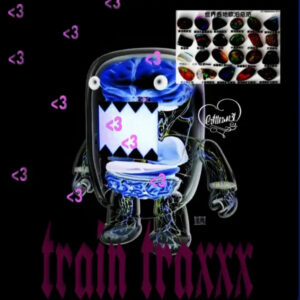Kurt Cobain, the iconic frontman of Nirvana, left an indelible mark on music with his raw, introspective lyrics and emotionally charged sound. His unique approach to music and songwriting resonated with a generation disillusioned by societal norms, earning him a place as one of the most influential artists of the 1990s. Cobain’s artistry was a blend of authenticity, vulnerability, and rebellion, making his music timeless and universally relatable.
A Personal and Vulnerable Approach
Cobain’s lyrics were deeply personal, often drawing from his own experiences and emotions. Unlike many songwriters who crafted polished narratives, Cobain’s writing embraced imperfection and ambiguity, reflecting the chaotic nature of human emotion.
Honesty in Pain
Cobain’s songs often delved into themes of alienation, mental health struggles, and self-doubt. Tracks like “Something in the Way” and “Dumb” explore feelings of inadequacy and disconnection, resonating with listeners who shared similar struggles. His ability to articulate vulnerability made his music a safe space for those grappling with their own emotional complexities.
Stream-of-Consciousness Lyrics
Cobain often employed a stream-of-consciousness writing style, allowing his subconscious thoughts to guide his lyrics. This approach resulted in songs that were cryptic yet evocative, leaving room for interpretation. For example, “Smells Like Teen Spirit” combines seemingly nonsensical phrases with anthemic energy, capturing the spirit of youthful rebellion without adhering to conventional storytelling.
Rebellion Against Conformity
Cobain’s approach to music was rooted in a rejection of mainstream norms and commercial expectations. He often expressed disdain for the music industry’s focus on image and profit, prioritizing artistic integrity over marketability.
Grunge Aesthetic
As a pioneer of grunge, Cobain embraced a stripped-down, raw aesthetic that stood in stark contrast to the polished sound of mainstream rock in the late 1980s. Nirvana’s breakthrough album, Nevermind, popularized the grunge movement, but Cobain remained critical of its commodification.
Challenging Stereotypes
Cobain used his platform to challenge societal and gender norms. Songs like “All Apologies” and “Pennyroyal Tea” reflect his sensitivity and feminist beliefs, countering the hyper-masculine image often associated with rock stars. His willingness to be vulnerable and empathetic redefined what it meant to be a male artist in the rock genre.
Musical Simplicity with Emotional Depth
Cobain’s music was characterized by its simplicity, often built around basic chord progressions and repetitive structures. However, this simplicity was not a limitation—it was a deliberate choice that allowed the emotional depth of his lyrics and vocal delivery to shine.
Dynamic Contrasts
A hallmark of Nirvana’s sound was the use of dynamic contrasts, particularly the “quiet-loud-quiet” structure. Songs like “Smells Like Teen Spirit” and “Lithium” alternate between subdued verses and explosive choruses, creating a sense of tension and release that mirrors the emotional intensity of the lyrics.
Melodic Sensibility
Cobain’s melodic instincts set him apart from many of his contemporaries. Even in the grittiest of Nirvana’s tracks, there’s an underlying sense of melody that makes the songs memorable and accessible. This fusion of raw energy and melodic beauty is evident in tracks like “Come As You Are” and “In Bloom.”
The Influence of Poetry and Art
Cobain’s lyrics were heavily influenced by his love of poetry and visual art. He admired the works of writers like William S. Burroughs and Sylvia Plath, as well as visual artists such as Jean-Michel Basquiat. These influences are reflected in his abstract, metaphorical approach to songwriting.
Metaphors and Symbolism
Cobain often used metaphors and symbolism to convey complex emotions. In “Heart-Shaped Box,” he juxtaposes imagery of love and pain, creating a multifaceted exploration of relationships and vulnerability. The song’s lyrics are open to interpretation, allowing listeners to project their own meanings onto the words.
Artistic Layers
Cobain’s lyrics often contained layers of meaning, blending personal experiences with broader social commentary. For instance, “Polly” addresses themes of violence and empathy, challenging listeners to confront uncomfortable truths.
A Lasting Legacy
Kurt Cobain’s approach to music and lyrics has had a profound impact on artists across genres. His willingness to be vulnerable and his rejection of mainstream expectations paved the way for future generations of musicians to embrace authenticity in their work.
Influence on Modern Artists
Cobain’s influence can be seen in the work of artists like Billie Eilish, who blends introspective lyrics with genre-defying soundscapes, and Post Malone, who incorporates grunge aesthetics into contemporary hip-hop. These artists, like Cobain, challenge traditional boundaries and prioritize emotional honesty.
A Voice for the Voiceless
Cobain’s music continues to resonate with those who feel misunderstood or marginalized. His ability to articulate pain and vulnerability has made his work timeless, offering solace to listeners who find comfort in his words.
Impression
Kurt Cobain’s approach to music and lyrics was a reflection of his complexity as an artist and individual. By embracing vulnerability, rejecting conformity, and drawing inspiration from poetry and art, he created a body of work that remains as powerful and relevant today as it was in the 1990s. Cobain’s legacy is not just his music but his commitment to authenticity—a reminder that the most impressionable art comes from a place of truth.
No comments yet.








